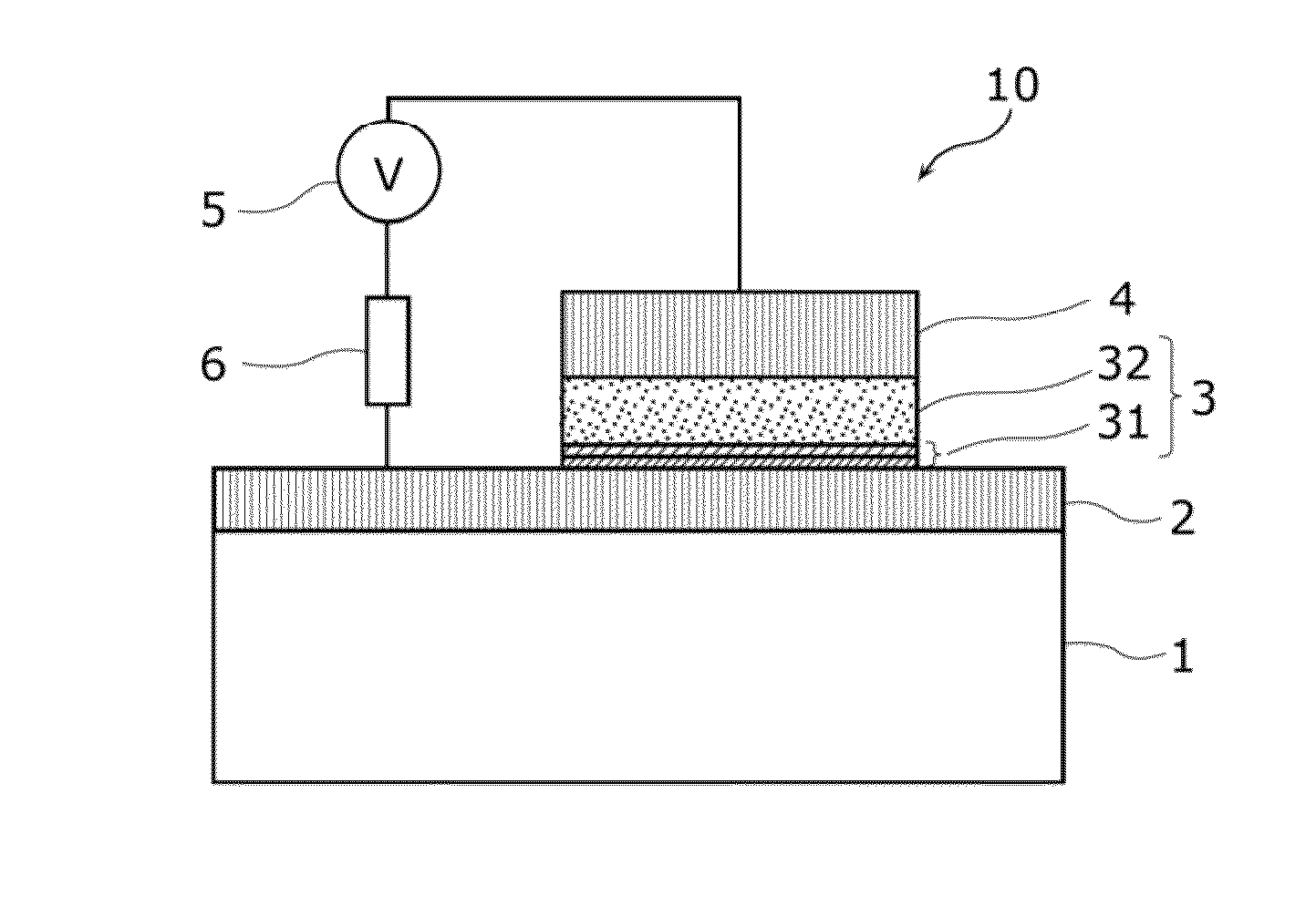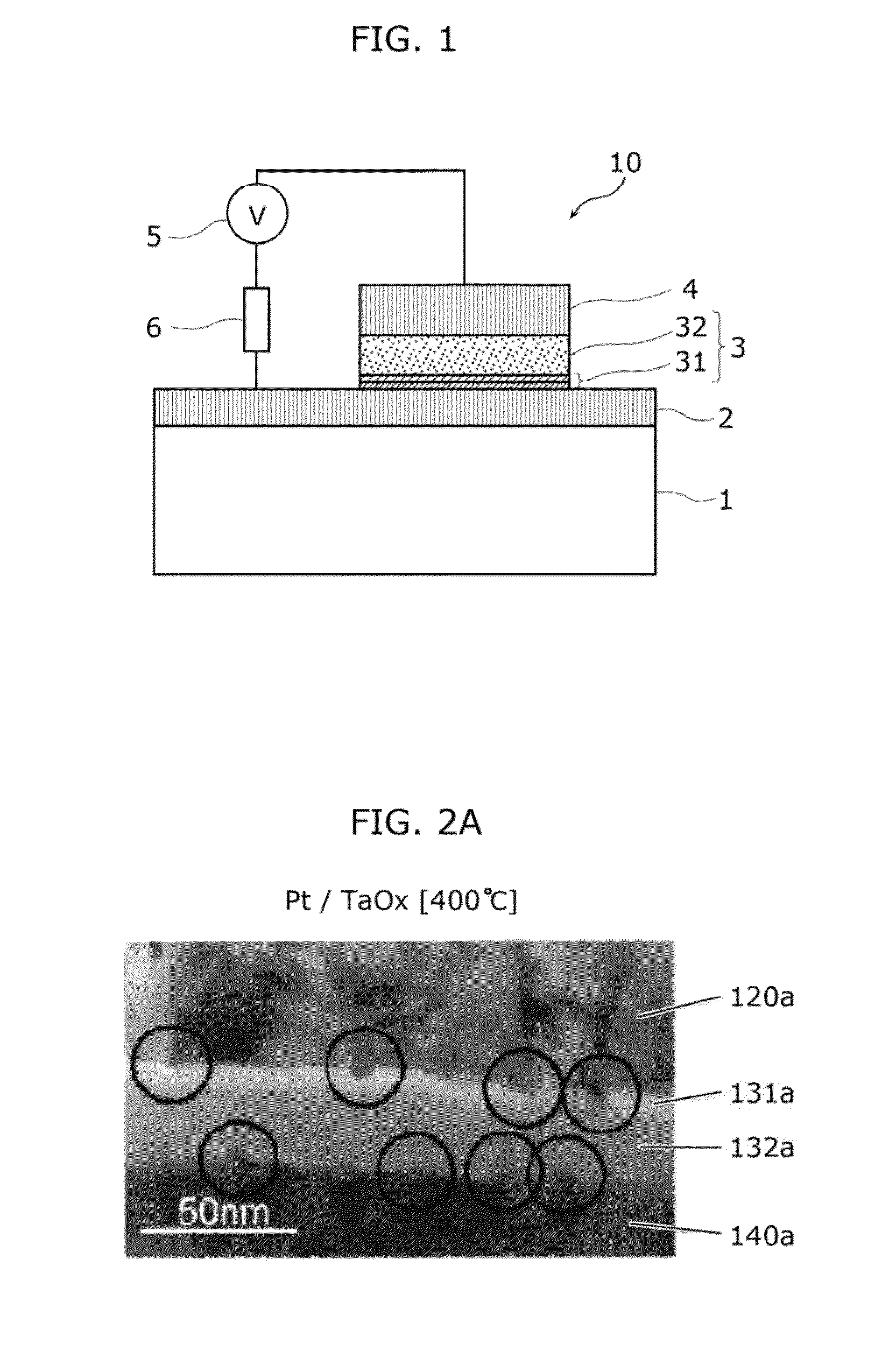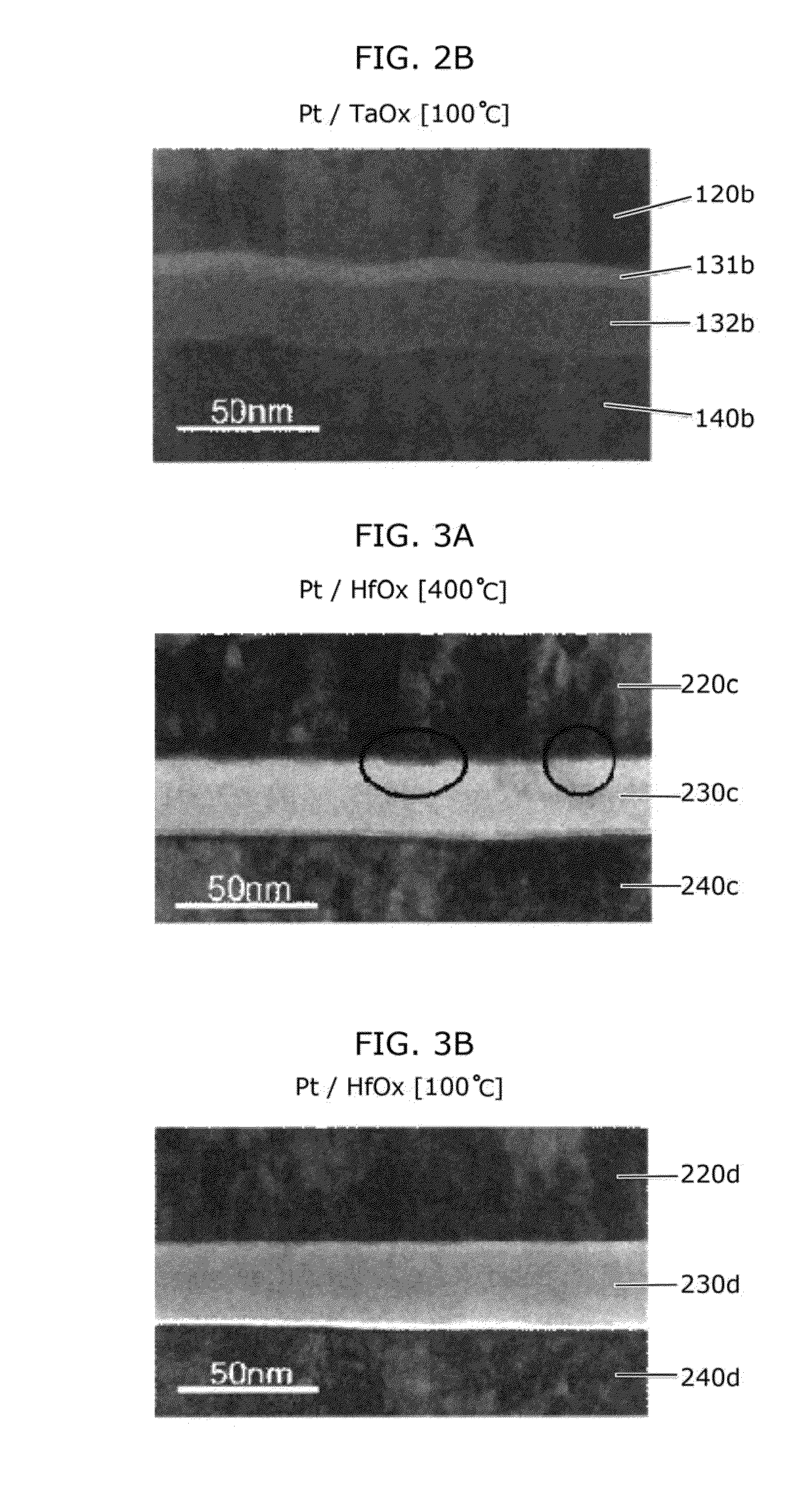Method of manufacturing nonvolatile memory element, and nonvolatile memory element
a technology of nonvolatile memory elements and memory cells, which is applied in the direction of bulk negative resistance effect devices, basic electric elements, electrical equipment, etc., can solve the problems of difficult to accelerate operations, hinder low voltage operations, and difficult to change the resistance state, so as to reduce the voltage and high-density memory cells
- Summary
- Abstract
- Description
- Claims
- Application Information
AI Technical Summary
Benefits of technology
Problems solved by technology
Method used
Image
Examples
experiment 1
(Experiment 1)
[0089]FIGS. 2A and 2B are each a transmission electron microscope (TEM) photograph showing a cross section of a nonvolatile memory element in which oxygen-deficient tantalum oxide is used in the variable resistance layer and Pt is used in the electrodes. FIG. 2A corresponds to the case where 400° C. is the maximum temperature in the process, and FIG. 2B corresponds to the case where 100° C. is the maximum temperature in the process.
[0090]In the element shown in FIG. 2A, a second oxygen-deficient tantalum oxide layer 132a of about 23 nm in film thickness, a first oxygen-deficient tantalum oxide layer 131a of about 8 nm in film thickness, and a first electrode layer 120a comprising a Pt layer of about 80 nm in film thickness are stacked in this order on a second electrode layer 140a comprising a Pt layer of about 50 nm in film thickness. The first oxygen-deficient tantalum oxide layer 131a is higher in oxygen content (substantially Ta2O5 in composition) than the second o...
experiment 2
(Experiment 2)
[0101]The inventors of the present invention then examined whether or not the same problem arises in the case of using hafnium instead of tantalum as the transition metal included in the variable resistance layer.
[0102]FIGS. 3A and 3B are each a transmission electron microscope (TEM) photograph showing a cross section of a nonvolatile memory element in which oxygen-deficient hafnium oxide is used in the variable resistance layer. FIG. 3A corresponds to the case where 400° C. is the maximum temperature in the process, and FIG. 33 corresponds to the case where 100° C. is the maximum temperature in the process.
[0103]In the element shown in FIG. 3A, an oxygen-deficient hafnium oxide layer 230c of about 30 nm in film thickness and a first electrode layer 220c comprising Pt of about 75 nm in film thickness are stacked in this order on a second electrode layer 240c comprising a W (tungsten) layer of about 150 nm in film thickness. The element shown in FIG. 3A was equally prod...
experiment 3
(Experiment 3)
[0108]As a result of conducting further study based on these findings, the inventors of the present invention have found out that projections can be suppressed by reducing the film thickness of the electrode layer comprising Pt. This is described below.
[0109]FIGS. 4A to 4C are each a transmission electron microscope (TEM) photograph showing an element cross section in this example. FIG. 4A shows a cross section of an element A, FIG. 4B shows a cross section of an element B, and FIG. 4C shows a cross section of an element C.
[0110]A first electrode layer 320a comprising a Pt layer in the element A shown in FIG. 4A is 8 nm in thickness, a first electrode layer 320b comprising a Pt layer in the element B is 13 nm in thickness, and a first electrode layer 320c comprising a Pt layer in the element C is 23 nm in thickness. All of the elements have the same structure except the thickness of the Pt layer. In detail, in the element A shown in FIG. 4A, a second electrode layer 34...
PUM
| Property | Measurement | Unit |
|---|---|---|
| thickness | aaaaa | aaaaa |
| thickness | aaaaa | aaaaa |
| thickness | aaaaa | aaaaa |
Abstract
Description
Claims
Application Information
 Login to View More
Login to View More - R&D
- Intellectual Property
- Life Sciences
- Materials
- Tech Scout
- Unparalleled Data Quality
- Higher Quality Content
- 60% Fewer Hallucinations
Browse by: Latest US Patents, China's latest patents, Technical Efficacy Thesaurus, Application Domain, Technology Topic, Popular Technical Reports.
© 2025 PatSnap. All rights reserved.Legal|Privacy policy|Modern Slavery Act Transparency Statement|Sitemap|About US| Contact US: help@patsnap.com



